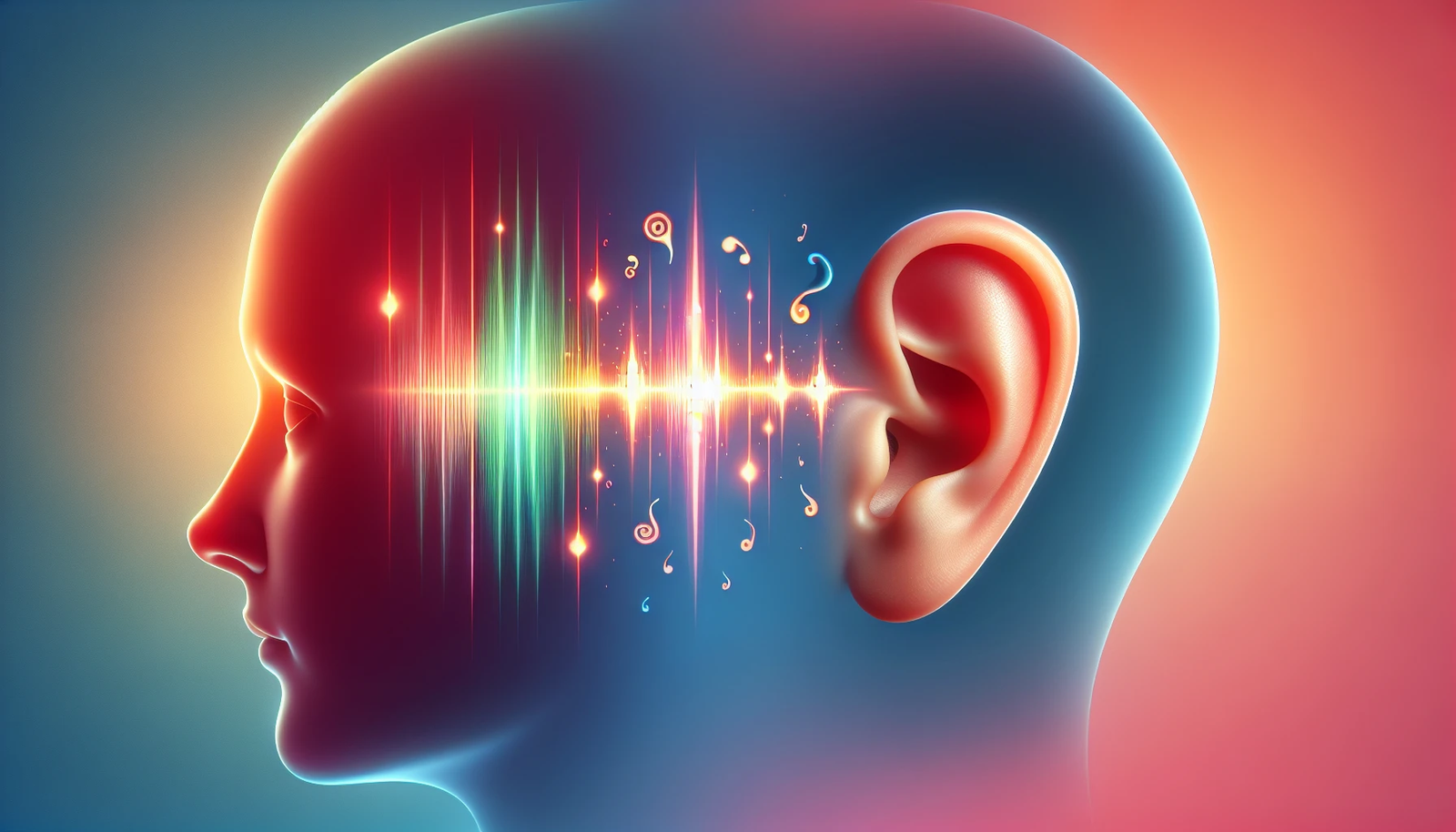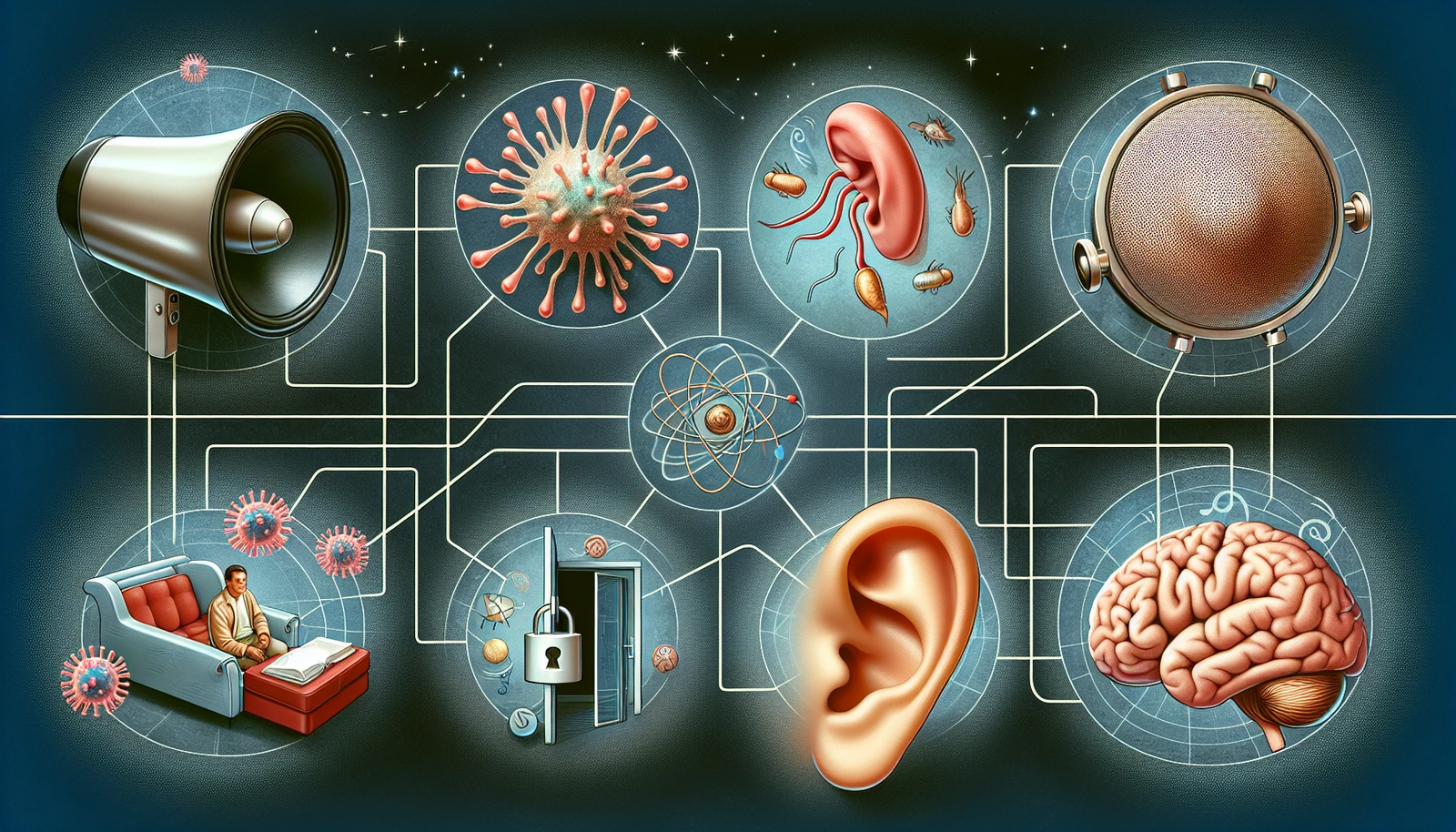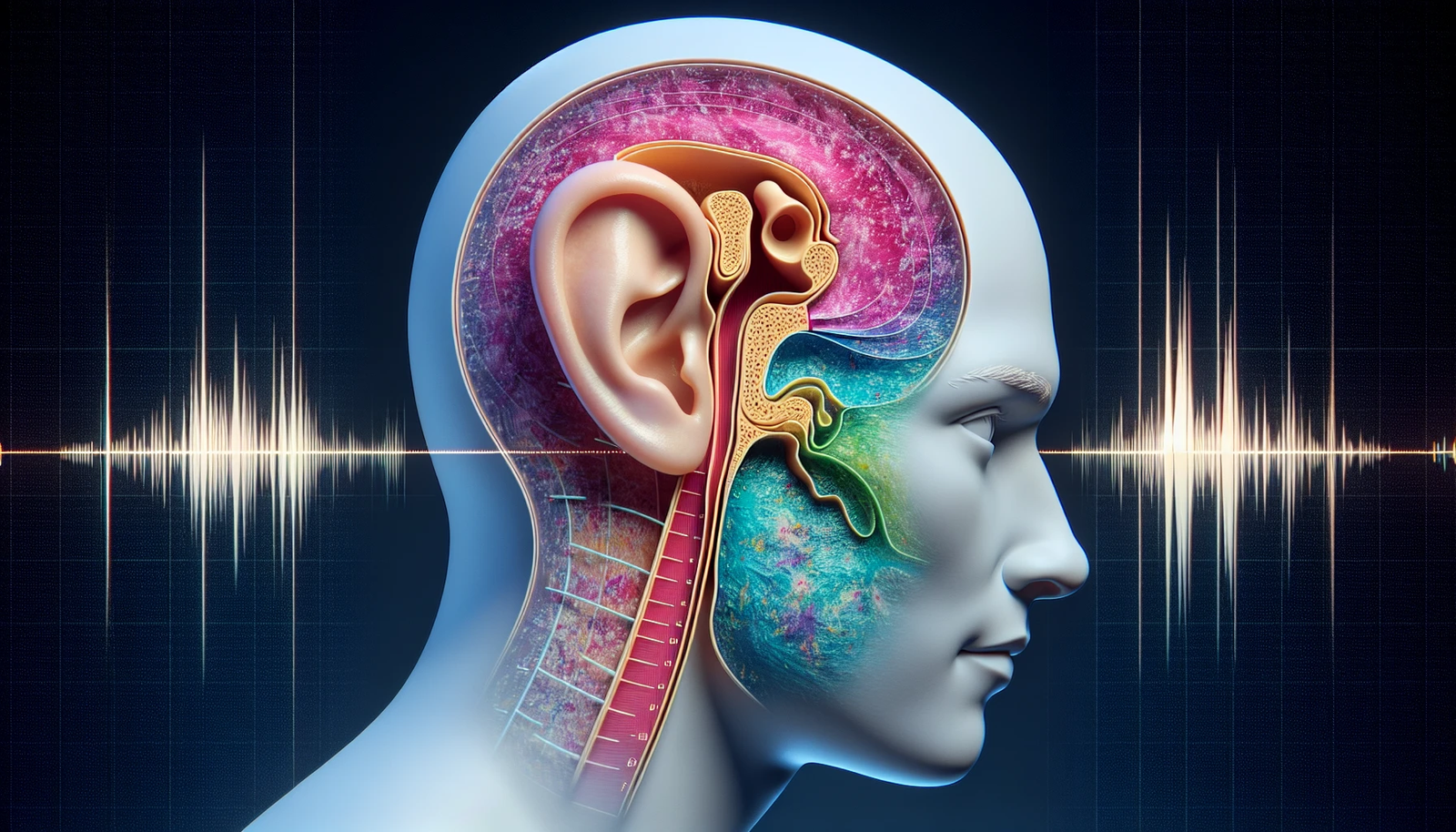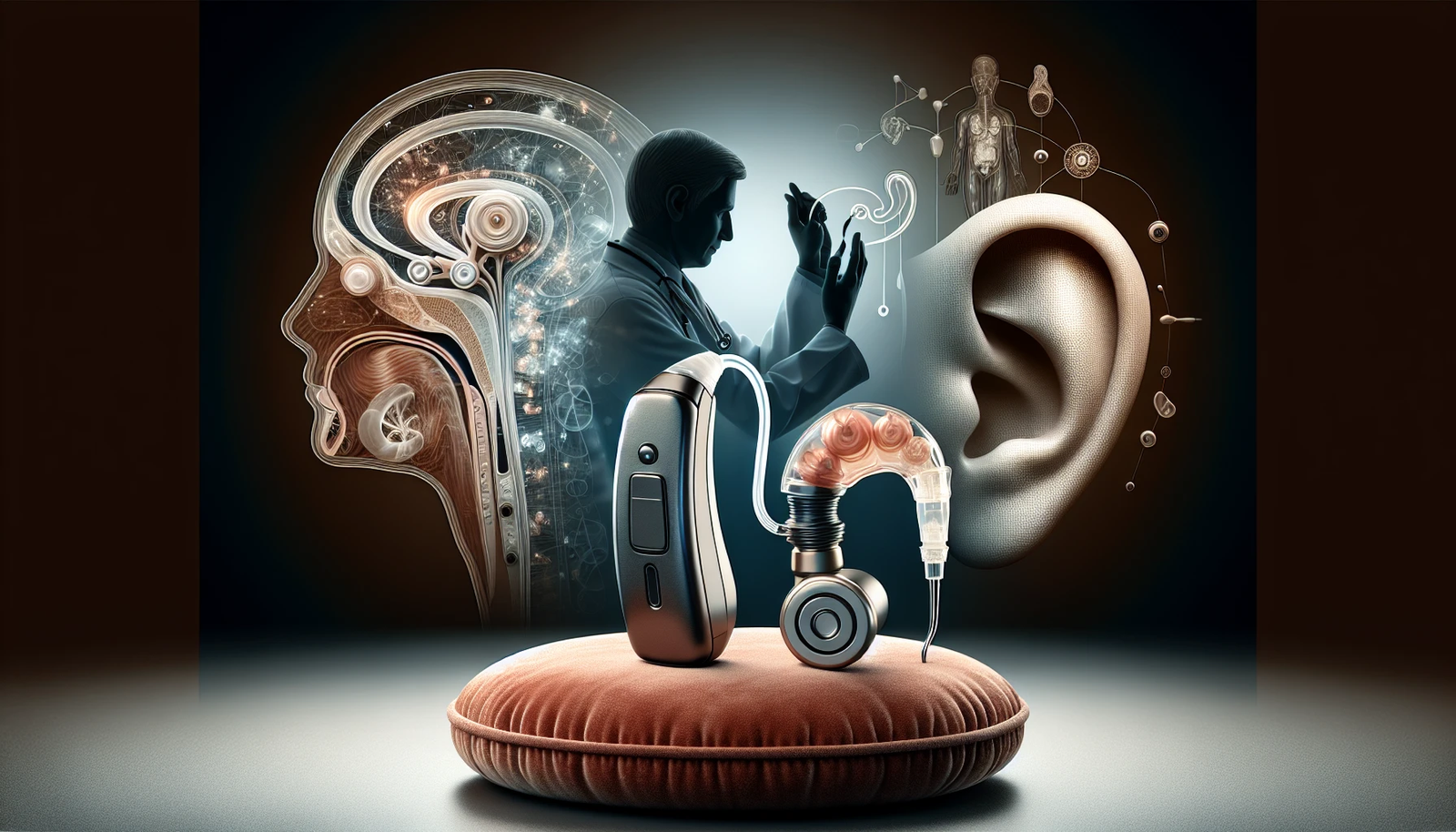Hearing loss can be asymmetrical, and when it is, the difficulty of understanding speech or locating sound sources becomes more pronounced. This type of hearing impairment often goes unnoticed, but has serious implications for someone’s quality of life. In this post, we will go over what causes asymmetrical hearing loss as well as its symptoms so that you understand how to manage the condition with available treatments like therapy and specialized equipment such as assistive listening devices.
Key Takeaways
Asymmetrical hearing loss is a difference in hearing ability between the two ears, which can be treated with the help of hearing aids or cochlear implants.
Causes range from noise-induced damage to ear infections and medical conditions such as Meniere’s disease.
Treatment for asymmetrical hearing loss includes using devices, communication strategies, and seeking support from healthcare professionals and loved ones.
Defining Asymmetrical Hearing Loss

Asymmetric hearing loss, also known as asymmetrical hearing loss, is when there is a marked variation in the ability to hear between each ear. Usually this discrepancy registers at 10 dB or higher on three different frequencies. Though it can be common for people of any age to experience some degree of hearing impairment, individuals dealing with an unbalanced audiometric profile face unique difficulties in perceiving sound direction and balance properly.
Luckily there are treatments such as implantable devices like cochlear implants or wearable items including traditional aids that have been confirmed effective even if one’s right and left ears display quite varied levels of acuity from each other – these solutions work towards helping those affected preserve their overall sense of listening while improving quality-of-life through quick diagnosis and timely intervention.
Normal vs. Asymmetrical Hearing
It’s normal for our hearing to be different between the two ears, but when there is a significant contrast in ability, it’s known as asymmetrical hearing loss. This type of condition can make sound localization and verbal communication more difficult, even impacting one’s balance since the brain needs input from both ears simultaneously to correctly process auditory information.
If you or someone close to you suspects having this form of impairment, then seeking evaluation from an audiologist would be beneficial in order to determine its degree within each ear and work out which treatment options could help improve speaking capabilities while ensuring quality life experience.
Measuring Asymmetrical Hearing Loss
Audiograms are used to identify and measure asymmetrical hearing loss in each ear. The results of the test, represented on a graph that shows an individual’s threshold levels for different sounds at various frequencies and volumes, allow healthcare professionals to recommend treatment tailored specifically to their condition.
During the audiogram session, individuals will be exposed to three or more tones ranging from low pitch/volume up until they can no longer detect them – these heard sound waves plotted onto the graph provide insight into any discrepancies between both ears’ levels of sensitivity when perceiving sound quality. With this information available, doctors may then decide upon which form(s) of treatment would best benefit those suffering with asymmetrical hearing issues. Allowing them access back to fuller auditory experiences.
Causes of Asymmetrical Hearing Loss

When it comes to asymmetrical hearing loss, there are a few possible causes that need investigation. These include damage due to noise exposure, ear infections and wax buildup, Meniere’s disease or otosclerosis (an abnormal growth in the middle ear); as well as acoustic neuromas – an emergency condition which requires medical attention right away.
It is essential for effective treatment of this type of hearing impairment that the underlying cause be understood first-hand. When it pertains specifically to acoustic neuroma incidents, they have been identified by experts as signifying something more serious than standard asymmetrical hearing difficulties and thus require prompt intervention with medical care providers should such symptoms become apparent during diagnosis tests.
The correct management plan being installed when dealing with different sorts of asymmetric auditory troubles can mean all the difference between proper recovery from impaired listening ability on one hand, compared against ongoing challenges regarding sensing sounds properly through both ears symmetrically on another situation entirely.
Noise-Induced Hearing Loss
Asymmetrical hearing loss, which is caused by loud noises such as machinery and firearms impacting the hair cells in the inner ear unequally, is one of the most common types of hearing loss. Although we are still not certain what precisely causes this form of damage to occur more so on one side than another, it can be prevented with protective measures taken against excessive noise levels. When any signs or symptoms indicative of asymmetrical hearing appear, professional help should also be sought immediately.
Medical Conditions
Hearing loss that affects one ear can be caused by several different medical conditions. An accumulation of fluid or weakened bones structures in the affected area are often a result of an ear infection and lead to asymmetrical hearing difficulties. When wax builds up around the canal, it prevents sound waves from entering properly, which also causes auditory problems on only one side. More severe health issues such as Meniere’s disease or acoustic neuromas may have symptoms including inequalized hearing capabilities between ears. A professional healthcare provider should provide care and treatment for any kind of asymmetrical damage regarding hearing ability.
Signs and Symptoms of Asymmetrical Hearing Loss

Those suffering from asymmetrical hearing have difficulty with their hearing ability. One ear being more affected than the other. Symptoms often include difficulties localizing sounds, tinnitus (ringing in ears), vertigo (dizziness) and a reliance on using only one of the two ears for listening purposes. These issues can be detrimental to daily life, making it harder for communication or even general navigation tasks. It is therefore advisable that those experiencing such problems seek professional help, as diagnosis could potentially improve the quality of living by enhancing auditory capacities once again! In some cases, testing like an ABR test or MRI may also be needed to determine exactly what is causing this type of specific loss when it comes to hearing sense.
Difficulty with Sound Localization
Individuals living with asymmetrical hearing loss face a unique challenge: difficulty localizing sounds. Due to the fact that both ears work together in sending information about sound direction and source to the brain, any imbalances between them can adversely affect its understanding of these signals. This presents an issue for everyday activities and communication, but has serious implications when it comes to safety on roads. Impaired ability to identify sirens or horns as well as approachable vehicles may lead someone into a medical emergency without proper cautionary measures taken beforehand. An example is not being able to detect what type of vehicle is coming toward you or from which side exactly this danger appears until too late. Asymmetry regarding one’s hearing represents no small threat unless strategies are employed so such adverse effects don’t happen frequently enough Unfortunately, circumventing asymmetrical hearing challenges remains difficult even today since the condition rests largely on auditory reception abilities depending heavily upon our two ears working harmoniously at all times, regardless of the situation encountered while outside home!
Tinnitus and Vertigo
Hearing loss, especially when unevenly distributed between the ears, is a factor that can cause tinnitus or ringing in one’s ear. It may also contribute to vertigo and dizziness caused by Meniere’s disease or acoustic neuromas. The presence of these symptoms should be discussed with healthcare professionals for possible treatments which will manage them efficiently. As asymmetrical hearing has such an impact on well-being and daily life, it requires appropriate attention from those who experience them regularly.
Diagnosing Asymmetrical Hearing Loss

Hearing loss, particularly asymmetrical hearing, can be identified through an audiogram evaluation. This painless procedure assesses the levels of auditory detection in both ears using earphones connected to an audiomenter and playing out tones at specific volumes and frequencies. If Analysis is needed, then a comprehensive hearing test may also include examinations such as ABR or MRI scanning to uncover any root causes and decide on suitable treatment methods.
Audiogram Evaluation
Audiograms offer a graphic representation of an individual’s hearing capabilities, and are important for detecting asymmetrical hearing loss. The softest sounds the person can perceive at different frequencies is marked on a graph to discover what level of impairment each ear has suffered from. By noting any differences in levels between ears, healthcare practitioners will be able to diagnose the kind and degree of this type of problem and decide upon appropriate treatment plans which could include using hearing aids or cochlear implants as well as medical intervention if required.
Additional Tests
In cases where asymmetrical hearing is present, testing may be required to identify the cause. An Auditory Brainstem Response (ABR) test can assess the functioning of related pathways in order to detect any abnormalities between both ears. This includes locating damage or tumors which could result in such a condition. Magnetic resonance imaging (MRI), on the other hand, creates detailed images of key structures like temporal bones and brain parts that help diagnose it as well. In many instances, one might need an ENT specialist for determining what treatment approach should be taken based on their diagnosis.
Treatment Options for Asymmetrical Hearing Loss

Treatment for asymmetrical hearing loss should be tailored to each individual’s particular needs and might include:
Hearing aids that are configured according to the unique hearing loss in both ears;
Cochlear implants directly stimulating the cochlear nerve through electrical impulses so as to restore sound reception on a deafened ear;
Medical interventions such as antibiotics if an infection is present, extraction of impacted earwax or even surgical procedures like those used in cases of Meniere’s disease or acoustic neuromas. While it can often involve many approaches combined together, seeking consultation with healthcare professionals for advice will help ensure successful treatment outcomes when dealing with asymmetrical hearing issues.
Hearing Aids and Cochlear Implants
Hearing aids and cochlear implants are utilized to treat sensorineural hearing loss, particularly asymmetrical types of such a condition. These devices work by boosting sounds in the environment, thus enabling those affected to comprehend better and communicate more efficiently. For cases of asymmetrical hearing impairment, it is possible for adjustments in these gadgets to suit perfectly this unique issue which affects each ear differently so as to give them an improved sound experience with greater balance than before.
On the other hand, Cochlear Implants require surgical placement inside the body where they operate by stimulating directly signals from what’s known as the “cochlear nerve” through electrical impulses – finding application when severe-to-profound instances appear resistant to solely using regular Hearing Aids. Both items could bring forth significant improvement on someone’s life who has been diagnosed with this kind of varying levels or type (asymmetrically speaking) of hearinglessness.
Medical Treatments
In cases of asymmetrical hearing loss, various treatments may be necessary to address the underlying cause. For instance, antibiotic treatment is prescribed to help reduce inflammation associated with ear infections and can potentially improve one’s hearing abilities. Removal of impacted wax in an obstructed ear canal could also aid sound transmission through a person’s internal auditory canal.
For more serious issues such as Meniere’s disease or acoustic neuromas, surgery might be needed. It would need consultation with a professional for deciding on which approach has fewer risks and greater benefits along with other details surrounding their specific condition when pertaining to their ears and overall hearing wellbeing.
Coping with Asymmetrical Hearing Loss
Navigating life with asymmetrical hearing loss can be hard, but it is achievable with the right help and strategies in place. Acquiring to use technology such as cochlear implants or hearing aids may take a while because one’s brain needs time for adaptation to amplified sounds. It’s also helpful to acquire skills of effective communication, which will ultimately improve connections and lifestyle quality.
During this period, obtaining aid from medical professionals, audiologists and family/friends should not be overlooked since they are able to give knowledgeable advice along with support that individuals affected by uneven hearing need when adjusting their condition in order to make the most out of their listening capabilities.
Adjusting to Hearing Devices
Patience is required when beginning to utilize hearing aids or cochlear implants as the brain needs time to comprehend and join with the intensified sounds from these devices. Any discomforts one may be experiencing should be talked about with an audiologist, so they can make any alterations necessary for a comfortable fit.
Consistent practice while wearing their devices on a regular basis helps train the mind in understanding amplified audio more effectively over time. Which will lead to improved listening capabilities ultimately resulting in better overall quality of life through enhanced hearing abilities.
Communication Strategies
Individuals dealing with asymmetrical hearing loss can lead a happy and fulfilling life if they take advantage of support from professionals and loved ones. Employing effective communication strategies. Lip-reading, positioning oneself to maximize sound reception, reducing background noise by asking conversation partners for slower speech or repeating what was said are some techniques that could be useful when communicating with people who have an imbalance of their hearing abilities. Summarizing information as well as rephrasing it may also help facilitate understanding between the parties involved.
By taking on board these simple steps, individuals affected by this type of hearing impairment should experience improved access to meaningful conversations providing greater connection within social settings improving their quality of life overall.
Summary
Through early diagnosis, appropriate treatment and effective communication strategies, individuals with asymmetrical hearing loss can lead enriched lives. By being aware of the causes, signs and available treatments for this type of hearing disorder, they are able to take control of their condition as well as stay connected. These steps help them manage their daily life despite any challenges related to their asymmetrical hearing issue.
Frequently Asked Questions
What is the most common cause of asymmetrical hearing loss?
Asymmetrical hearing loss can have many potential causes, including age-related presbycusis, noise exposure leading to injury of the ears, Meniere disease which is a disorder affecting both inner ear and balance organs, drug side effects such as those with aminoglycosides and infectious agents.
How do you fix asymmetrical hearing?
When asymmetrical hearing is present, one can choose to use either a pair of hearing aids or cochlear implants in order to remedy the situation. If the damage is more serious, these electronic implants could work better than regular aids as they are able to bypass any damaged parts of the ear for improved auditory reception.
What are the three 3 types of hearing loss?
Patients affected by hearing loss should be aware of the three types – sensorineural, conductive and mixed. Knowing which type they have is key to getting suitable treatment. Hearing loss can affect anyone at any age. Thus it’s important that patients get a proper diagnosis in order to find effective ways for dealing with their condition.
What is the difference between asymmetrical and symmetrical hearing loss?
When it comes to hearing loss, symmetrical refers to when the level and profile of impairment is similar across both ears, whereas asymmetrical pertains specifically to each ear having a unique amount and type of deficiency.
Progressive hearing damage gradually deteriorates over time while sudden can occur suddenly without warning signs in either or both ears.
How is asymmetrical hearing loss diagnosed?
An audiogram evaluation is used to measure hearing levels in the two ears, which can assist with diagnosis of asymmetrical hearing loss. Other tests such as ABR and MRI might also be recommended for Investigation.
